Yesterday, I wrote about my experience where I needed night vision while being stalked on the mountain “alone”. I also wrote about the various generation technology advancements of night vision. Let’s proceed to outline the details of night vision technology and what it means.
Understanding Resolution and Signal-to-Noise Specifications
The two most important specifications for any night vision device are resolution and signal-to-noise ratio. In fact one of the main parameters for determining whether a night vision device can be exported is the multiple of these two specifications, also known as “Figure Of Merit”. If the NVD you are considering buying is subject to ITAR (International Traffic in Arms Regulations), it is a pretty good bet that you are looking at a high quality NVD. Conversely, if there is no restriction attached to the unit you are considering, it is probably a POS.
Resolution
Much like a television or computer screen, the more information that can be packed onto your night vision image tube, the clearer it will be. Measured in line pairs per millimeter (lp/mm), the higher the specified lp/mm the better. When you compare an average Gen1+ 25 lp/mm image tube to the typical resolution that you’ll find on a Gen3 tube, which is 64 lp/mm, it’s pretty obvious that a Gen3 tube is going to be better. No matter how you slice it, 150% better resolution means a better image.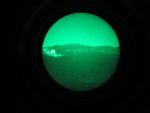
Signal-to-Noise Ratio
However, a high resolution isn’t the only thing you should be looking for in your image tube. Though it’s a good start, keep in mind that the real function of a good night vision system is to perform well under incredibly low light conditions. This is where the signal-to-noise measure becomes important.
Signal-to-Noise provides a measure of the light signal that reaches your eye divided by the perceived noise that you actually see. For example, “noisy” tubes look like there’s a snowstorm going on inside the tube. Even a very bright tube that’s full of snow (noise) is going to produce lousy results. A good Gen3 tube will have a signal-to-noise ratio in the high 20s, while Gen1+ ratios are much lower, generally sitting in the single digits. My two best NVDs are a PVS-22, which has a photocathode response of 2200, a signal to noise ratio of 27, and it also provides 64 lp/mm resolution. I also have a Knights Armament PVS 30 with a photocathode response of 2300, signal to noise of 25, and also 64 pm/mm resolution.
The bottom line is that the best image tubes have both a high resolution (as high as 73 lp/mm) and a high signal-to-noise ratio. While most night vision devices will provide specifications detailing resolution, only the highest quality tubes provide data sheets detailing their signal-to-noise ratios.
Photocathode Sensitivity
Photocathode sensitivity is a measure of how well the image intensifier tube converts light into an electronic signal so it can be amplified. The measuring units of photocathode sensitivity are micro-amps/lumen (µA/lm) or microamperes per lumen. This criterion specifies the number of electrons released by the Photocathode (PC). PC response is always measured in isolation with no amplification stage or ion barrier (film).
Therefore, tube data sheets (which always carry this “raw” figure) do not reflect the fact that over 50% of those electrons are lost in the ion barrier. For most third generation image intensifiers, the photo response is in the 1800 µA/lm (2000 µA/lm or greater for the latest Omni VI Pinnacle tubes), the actual number is more like 900 µA/lm. The higher this number the better, and when I purchased my PVS-22 for a king’s ransom I could have gotten a unit with a 2700 photocathode response for a few thousand more. Thanks goes to one of my USMC buddies, Jeff, for convincing me I needed this NVD. Semper Fi! Jeff is an excellent gunsmith and a good friend, and we go back and forth costing each other money on cool expensive things, lol.
Dedicated NVD or Clip On NVD Weapon Sight
Now that we have a good working knowledge of how NVDs work and what each generation of NVD offers the end user, there is another choice for you to consider. Dedicated NVD weapon sights can be Gen 1, 2, 2+, 3, or 3 auto-gated tubes. Clip on NVDs are positioned in front of your regular day scope and can be purchased in Gen 2, 2+, 3, and 3 auto-gated tubes.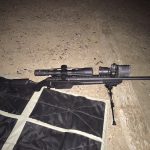
Dedicated NVDs are self-contained, meaning that they function as a NVD and a NVD weapon sight both, complete with either green or amber/red cross hairs. Examples of this are USNV 440, Litton 845, Night Optics 520, Deidal D740 and D760, and the outrageously expensive Raptor. I personally own every one of these scopes except for the D740.
Advantages of Dedicated NVD
The two main advantages of this system are that you only have to buy one scope, which can save you quite a bit of money, and they are way easier and faster to focus than are day scope/clip on set ups.
Disadvantages of Dedicated NVD
Disadvantages of dedicated NVDs are you almost have to dedicate a rifle to being a night vision only rifle. Also, outside of my Mil-Spec 6x Raptor, most dedicated NVD weapon sights have very shaky reticles and somewhat nebulous windage and elevation adjustments. They work best when you zero them in for a particular range and then leave them alone. Dedicated NVDs have come way down in price. Coincidentally enough, I just received an email from the Sportsman’s Guide showing reconditioned PVS 4 weapon sights with Gen 2 tubes for only $1,259! I remember when these things were $4,000 plus!!
Advantages of Clip-on NVD
Clip-on NVDs are attached on a forward rail mount in front of your day optic. The three main advantages of this set up are that you can use your clip-on NVD on multiple rifles, and they are much smaller and lighter than dedicated NVDs. They also tend to be more rugged, since there is fewer things internally to break.
Disadvantages of Clip-on NVD
Disadvantages of clip-on NVDs are they require a day optic, aim point, ACOG, or EOTech in order to use as a weapon sight. They are also difficult to focus, as now you have to focus two scopes in line with each other in order to see your target clearly. If you have multiple targets at varying distances, this can be a slow and frustrating process. Most people I know who hunt things at night, dislike clip-on night vision devices for this very reason. Personally, I have both and I like both. It would just depend on what I needed to do at the time which one I prefer.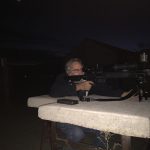
Another thing to keep in mind about clip-on night vision devices is regardless of how the manufactures claim you can use them up to 15 and 20 power, that simply isn’t the truth. If you have a high-end, day scope and a high-end clip-on, you can get a reasonably useful image to 10 or 12 power in ideal conditions. Most of the time you will settle on 5 to 8 power, so resist the urge to buy a day scope with a high minimum power setting, as you could greatly decrease your usability. Clip-on devices are going to cost you more. A good mid-level choice is the Armasight brand, but stay away from their digital zoom models. Digital zoom and night vision should never go together, kind of like guacamole and watermelon.
Looking Through An NVD
When you look through an NVD, you aren’t really looking at the object your NVD is pointed at. Rather you are looking at a picture of what your NVD is pointed at. Night vision devices capture the small amount of light that’s in the surrounding area (such as moonlight or starlight) and converts the light energy (scientists call it photons) into electrical energy (electrons). These electrons pass through a thin disk (a microchannel plate) that’s about the size of a quarter and contains over six million channels.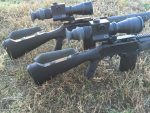
As the electrons go through the channels, the electrons are multiplied thousands of times. These multiplied electrons are then accelerated onto a phosphor screen that converts the electrons back into photons and lets you see a bright nighttime view even under extremely dark conditions. The downside of all these multiplied and accelerated electrons is what is called image pixelization. The more you magnify your night vision image, the more dramatic this effect becomes. Add an additional optic into the equation in the way of a day scope, which has to be focused in conjunction with your clip on NVD, and focusing both optics on your target can be a frustrating and significantly slower process for you as the shooter.
NVDs For Observation
For all my really cool NVD weapon sights, I spend way more time using my AN/PVS 7 night vision goggles and ITT 260 Night Mariner binoculars. There really isn’t any great deals out there on PVS7 goggles, but if you can find Gen 3 pinnacle auto gated units anywhere south of $4,500 and have the money, buy them. The ITT units are older but still very serviceable. I have seen them on ebay for as little as $800. They are kind of a pain to focus the first time, but once you have the hang of it they provide a very good image with half-moon detection out to probably 400 or 500 yards. I believe the Gen 2 units are 48 lp/mm and the Gen 3 ones are up to 56 lp/mm.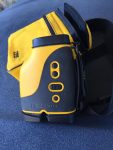
Stalking the Night
At my gun range, we routinely hold night vision matches with varying target sizes and varying distances. It is always interesting and fun to see what set ups are going to show up. I am a big believer in having a night vision device to protect your family with. Yes they are a huge expense but they can give you a critical edge that few other items can provide you. They can also give you peace of mind on a chilly night when something is moving around in the darkness just out of site.
See Also:
SurvivalBlog Writing Contest
This has been another entry for Round 73 of the SurvivalBlog non-fiction writing contest. The nearly $11,000 worth of prizes for this round include:
First Prize:
- A $3000 gift certificate towards a Sol-Ark Solar Generator from Veteran owned Portable Solar LLC. The only EMP Hardened Solar Generator System available to the public.
- A Gunsite Academy Three Day Course Certificate. This can be used for any one, two, or three day course (a $1,090 value),
- A course certificate from onPoint Tactical for the prize winner’s choice of three-day civilian courses, excluding those restricted for military or government teams. Three day onPoint courses normally cost $795,
- DRD Tactical is providing a 5.56 NATO QD Billet upper. These have hammer forged, chrome-lined barrels and a hard case, to go with your own AR lower. It will allow any standard AR-type rifle to have a quick change barrel. This can be assembled in less than one minute without the use of any tools. It also provides a compact carry capability in a hard case or in 3-day pack (an $1,100 value),
- Two cases of Mountain House freeze-dried assorted entrees in #10 cans, courtesy of Ready Made Resources (a $350 value),
- A $250 gift certificate good for any product from Sunflower Ammo,
- American Gunsmithing Institute (AGI) is providing a $300 certificate good towards any of their DVD training courses, and
- Two cases of Meals, Ready to Eat (MREs), courtesy of CampingSurvival.com (a $180 value).
Second Prize:
- A Model 175 Series Solar Generator provided by Quantum Harvest LLC (a $439 value),
- A Glock form factor SIRT laser training pistol and a SIRT AR-15/M4 Laser Training Bolt, courtesy of Next Level Training, which have a combined retail value of $589,
- A gift certificate for any two or three-day class from Max Velocity Tactical (a $600 value),
- A transferable certificate for a two-day Ultimate Bug Out Course from Florida Firearms Training (a $400 value),
- A Trekker IV™ Four-Person Emergency Kit from Emergency Essentials (a $250 value),
- A $200 gift certificate good towards any books published by PrepperPress.com,
- A pre-selected assortment of military surplus gear from CJL Enterprize (a $300 value),
- RepackBox is providing a $300 gift certificate to their site.
Third Prize:
- A Royal Berkey water filter, courtesy of Directive 21 (a $275 value),
- A large handmade clothes drying rack, a washboard, and a Homesteading for Beginners DVD, all courtesy of The Homestead Store, with a combined value of $206,
- Expanded sets of both washable feminine pads and liners, donated by Naturally Cozy (a $185 retail value),
- Two Super Survival Pack seed collections, a $150 value, courtesy of Seed for Security, LLC,
- Mayflower Trading is donating a $200 gift certificate for homesteading appliances,
- Two 1,000-foot spools of full mil-spec U.S.-made 750 paracord (in-stock colors only) from www.TOUGHGRID.com (a $240 value), and
Round 73 ends on November 30th, so get busy writing and e-mail us your entry. Remember that there is a 1,500-word minimum, and that articles on practical “how to” skills for survival have an advantage in the judging.

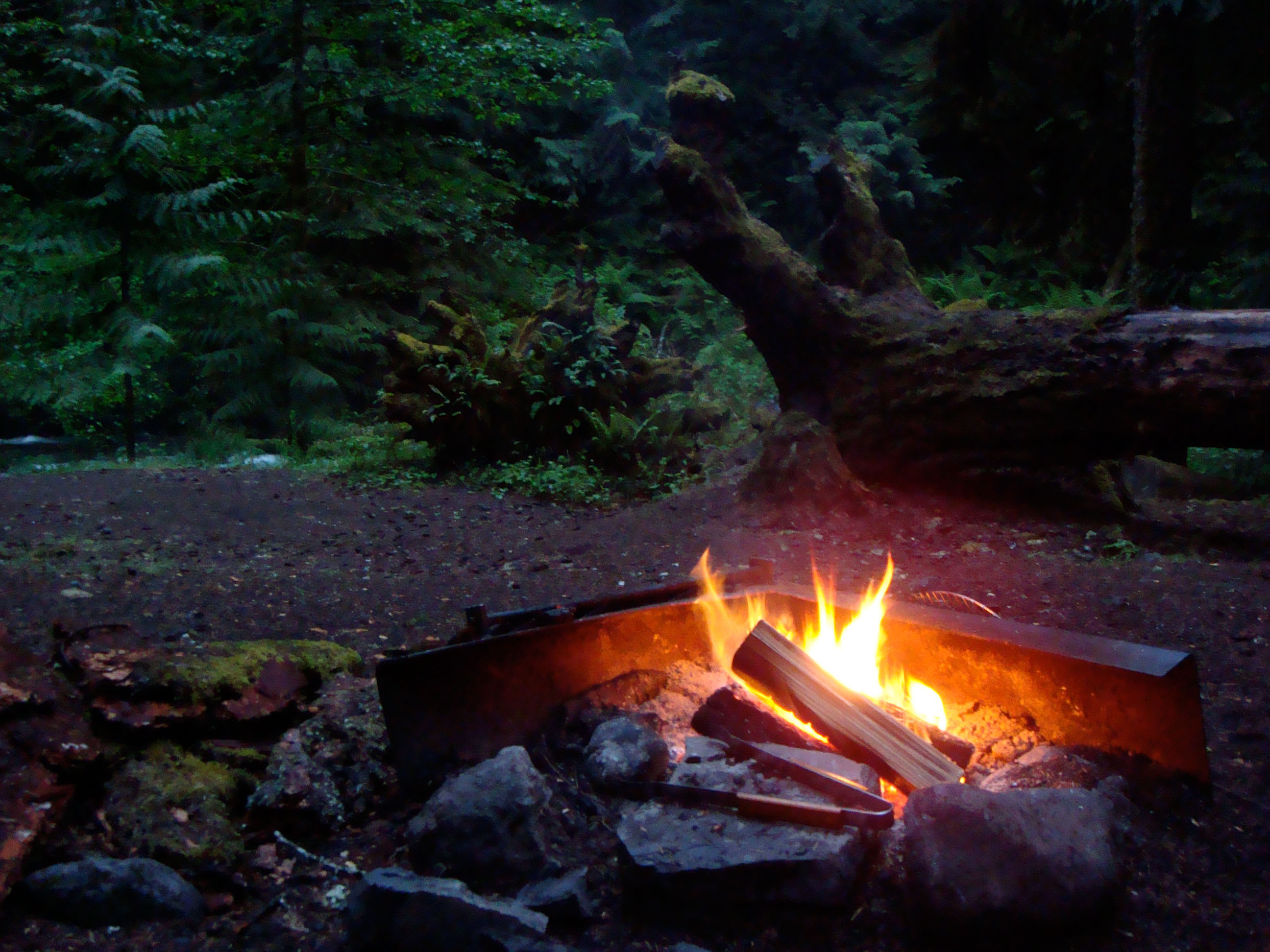









I’d love to hear what Mark B. thinks of the Bosun Core IR scopes and spotting devices.
The Boson core FLIR units (different technology than Night vision) have so far only been seen briefly at SHOT Show in January. No one has any yet as FLIR has not shipped any yet. So it will be a while yet before they are out.
I would like to hear about your impressions of thermal devices and compare to the NVD mentioned in your articles. Thank you
I also would like a comparison between the two from some one knowledgeable like you.
Thanks. Very nice job.
Using an AN PVS-14 NVD with an Aimpoint or an EOTech is actually pretty simple. There’s no adjustments necessary on either of the two scopes other than adjusting the brightness of the reticle which can be adjusted and then left alone providing the surrounding available light remains the same. The NVD does need to be adjusted for clarity as viewing distance changes but its a quick function to do. I’ve gotten plenty of time on my buddie’s setup using the above mentioned gear so when (or if) I can get my own goodies,I intend to be set up the same with a quick removable AN PVS-14 and probably an EOTech because it seems to work better because the Aimpoint has a slightly tinted lense which tends to hinder the brightness of what you’re viewing. All I need to do now is win the lottery.
I run my AN PVS-14 NVD behind a Vortex red dot and there is very little adjustment it works great.